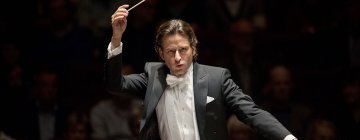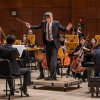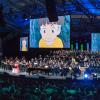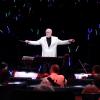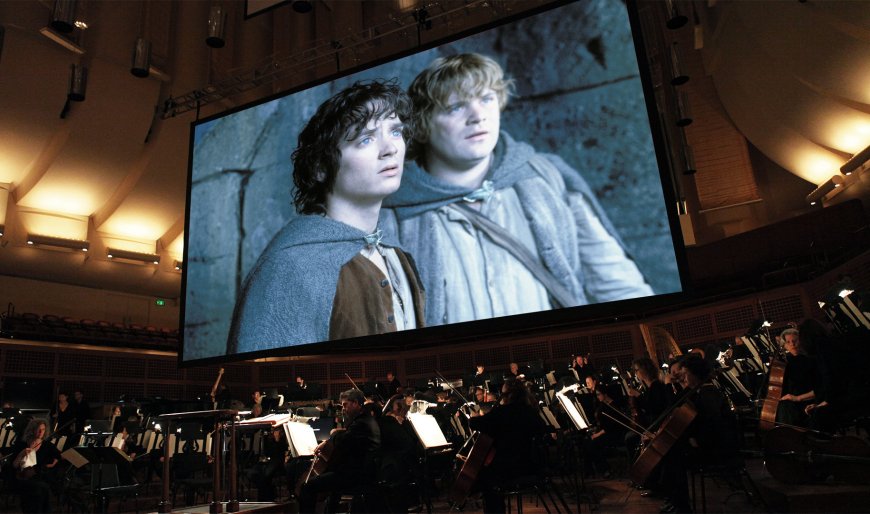
If you’re a real fan of orchestral music, you probably dream of (or have nightmares about) audience members spontaneously applauding or shouting their approval during a performance. You definitely wish for packed auditoriums full of diverse attendees.
This is what the San Francisco Symphony’s film series is designed to bring about, and it was definitely delivered during the orchestra’s live-in-concert showing of The Lord of the Rings: The Two Towers on Thursday, May 8.
Davies Symphony Hall was filled to bursting, and because this is a fantasy film, various audience members came in costume — lots of cloaks, some fancy hairstyles, and a few draped Art Nouveau-style gowns, including one that approached the color of Arwen’s iconic deep midnight blue. But I also clocked a woman with a motorcycle helmet, which she set down beside her seat in the boxes.
There were more children and younger people than usual. They applauded characters and even lines that have become memes on social media. There’s no way to know if these concertgoers are enthusiastic about orchestral music in general, but from overheard conversations, it was clear that attendees did know quite a bit about Howard Shore’s magnificent score.
That score is not as welcoming as the others in the LOTR trilogy. In keeping with the desperate war story onscreen, the music is dark, growly, and percussive. The few rays of light are all the more memorable. The famous Shire theme makes only a couple of appearances, but it has grown tenser — instead of a relaxed, flowing feel, the rhythm is sharper, its dotted rhythms more severe while its upbeats have been squeezed into two 16th notes.
The most notable new theme, the Rohan tune, appears memorably on a lonely solo fiddle, but we often hear it in low horns and trombones. It’s a long time into the movie before the trumpets sound what remains of the Fellowship theme as the cameras pick up Aragorn, Legolas, and Gimli on the chase. (Cue audience applause.)
Shore’s orchestration saves this gloomy atmosphere from becoming monotonous. The hardanger fiddle (quite miraculously imitated on plain violin in this performance by concertmaster Alexander Barantschik) is only the beginning. Even more striking is Gollum’s threatening theme in the movie’s third scene, played by a Hungarian cimbalom (hammered dulcimer) to unnerving effect.
But the master stroke of the whole score is the theme for the Uruk-hai orcs in Isengard. Set in an ungainly accented 5/8 meter, this section includes Japanese taiko drums, metal bell plates, and chains beaten upon piano wires. The SF Symphony provided all of these, and the live sound was penetrating and unexpectedly thrilling. Shore paid attention to the derivation of the word “Isengard” (Ring of iron) and captured it within the orchestral sound.
The composer’s style for The Two Towers, and LOTR as a whole, is as good a fit for live performance as could be wished. There’s no “Mickey Mousing,” the practice where the orchestra imitates the sound of the visual action on film. Conductor Ludwig Wicki’s tempos had to be exact, but the orchestra was at least relieved from having to sync with specific onscreen actions. You’d want more freedom in a plain symphony performance, but the musicians played with commitment and uncovered a lot of details that are usually lost in a film’s sound mix.
You’re immediately aware that the balance has shifted, even in the opening statement of the Ring theme, with the full violin section resonating in the hall and not disappearing on cue. Though the orchestra did play softly when asked, it could not be electronically relegated to the background.
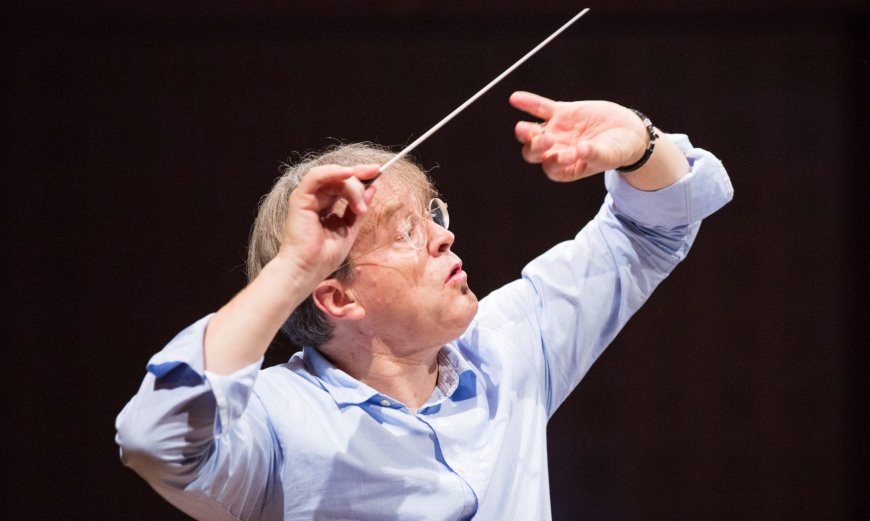
And this was a pleasant revelation: Only about 10 minutes of the three-hour movie are unscored. Some of that music, of course, is held chords and slow progressions, but the motivic web of Shore’s composition is as tightly woven as any Wagner opera (though the orchestra is less active), so paying attention to the whole yields benefits.
Not every LOTR fan approves of the filmmakers’ choices — the strong focus on Gollum, for example, and the overt dramatizing of his internal conflicts. But Shore spins gold out of these decisions. Soprano Kaitlyn Lusk affectingly sang “Gollum’s Song,” now one of the score’s most beloved and recognized cues, which at last brings an extended moment of aching, brooding lyrical beauty to the score.
The orchestra’s performance under Wicki was energetic and exemplary, and Pacific Boychoir Academy and the SF Symphony Chorus were brilliant. If this was a break from the more “serious” endeavors at Davies, you’d never have known it from the music.
